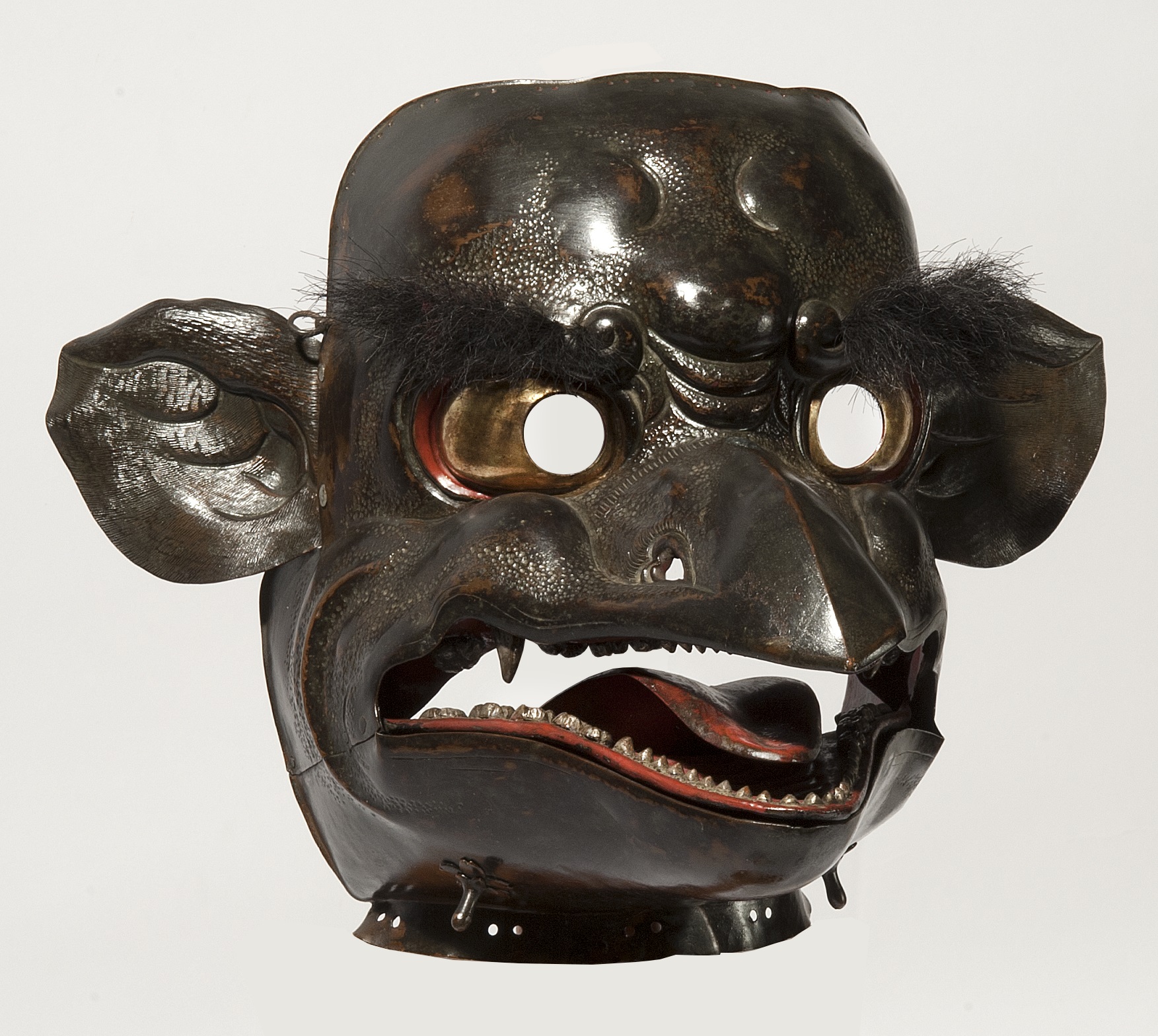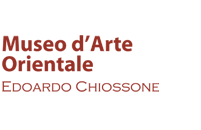
Click here to view image
Myōchin Yoshihiro, active in Japan at the beginning of the nineteenth century
Copper alloy sheet Beaten, finished to give a rust effect and partially gilt (corneas) with silver inlays (teeth) and interior red lacquer coating, height 35.3 and 35.4 cm
Gallery I, display case 8 (inv. no. AA-5077)
Edoardo Chiossone Collection, testamentary bequest, 1898
War mask
The samurai's helmet was often accompanied and completed by war masks, these protected the face and gave the warrior a terrifying or furious appearance, to frighten the opponent. In Gallery 1, display case 8, we find the war mask depicting the face of a karasutengu, or tengu with the appearance of a crow. According to ancient legends, the tengu, fearsome mythical beings who inhabit the forests and mountains, guarded the secret art of the sword. They are therefore particularly suitable as a subject for a war mask: in addition to frightening the enemy with their monstrous grin, they represent the skill of the samurai who wears it, comparing it to the incomparable supernatural ability of the tengu. The mask is dated Meitoku Era 3rd year (1392) and signed Ichijō Horikawa Jūichi Daimyōchin Yoshihiro saku, “Made by Myōchin Yoshihiro, eleventh generation, of Ichijō Horikawa”. Although the work is dated 1392, recent studies lead us to believe it is a case of gimei (false attribution), a common Japanese practice on swords and armor, which aimed to increase their value and authority by attributing them to illustrious blacksmiths or tracing the works to an ancient period. In this case the work is attributed to a member of the Myōchin family, the most important blacksmiths specialized in armor, but it dates back to an improbable historical period. A blacksmith named Myōchin Yoshihiro from the Horikawa area of Kyōto is attested to be active, instead, at the beginning of the 19th century.




